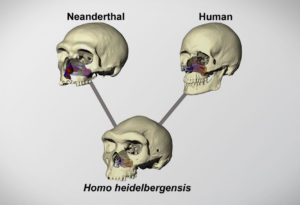Paleontologists have long studied Neanderthal skeletons. They are thought to be the earliest human species that lived in Europe and western Asia. However, it has always been a mystery why their skulls do not look like our own. What’s more, they lived in the same place for hundreds of thousands of years before modern humans made their way out of Africa.

There are many things in life that can be traced back to our ancestors. There are also many things that are the same. It is certain that we share a common ancestor with the Neanderthals, and we might share a common ancestor with the human species. Both of them have been around for more than 200,000 years.
There are many things that differentiate humans from Neanderthal skulls. For example, the human skull is more elongated than a Neanderthal one. The jawbones of humans and Neanderthals have different shapes that make them look different. In addition, the teeth of humans and Neanderthals are also slightly different. However, there are some features that all human skulls share with Neanderthal ones. These include:
- The shape of the earholes
- The height of the eye sockets
- The shape of the upper jaws (maxilla)
- The nose shape
The development of brain size and cranial capacity is one key element in identifying what distinguishes humans from Neanderthals. Another way to identify what makes us different from our predecessors is through teeth. Differences regarding tooth shape and size between humans and Neanderthals can be traced back to their evolution from a common ancestor.

